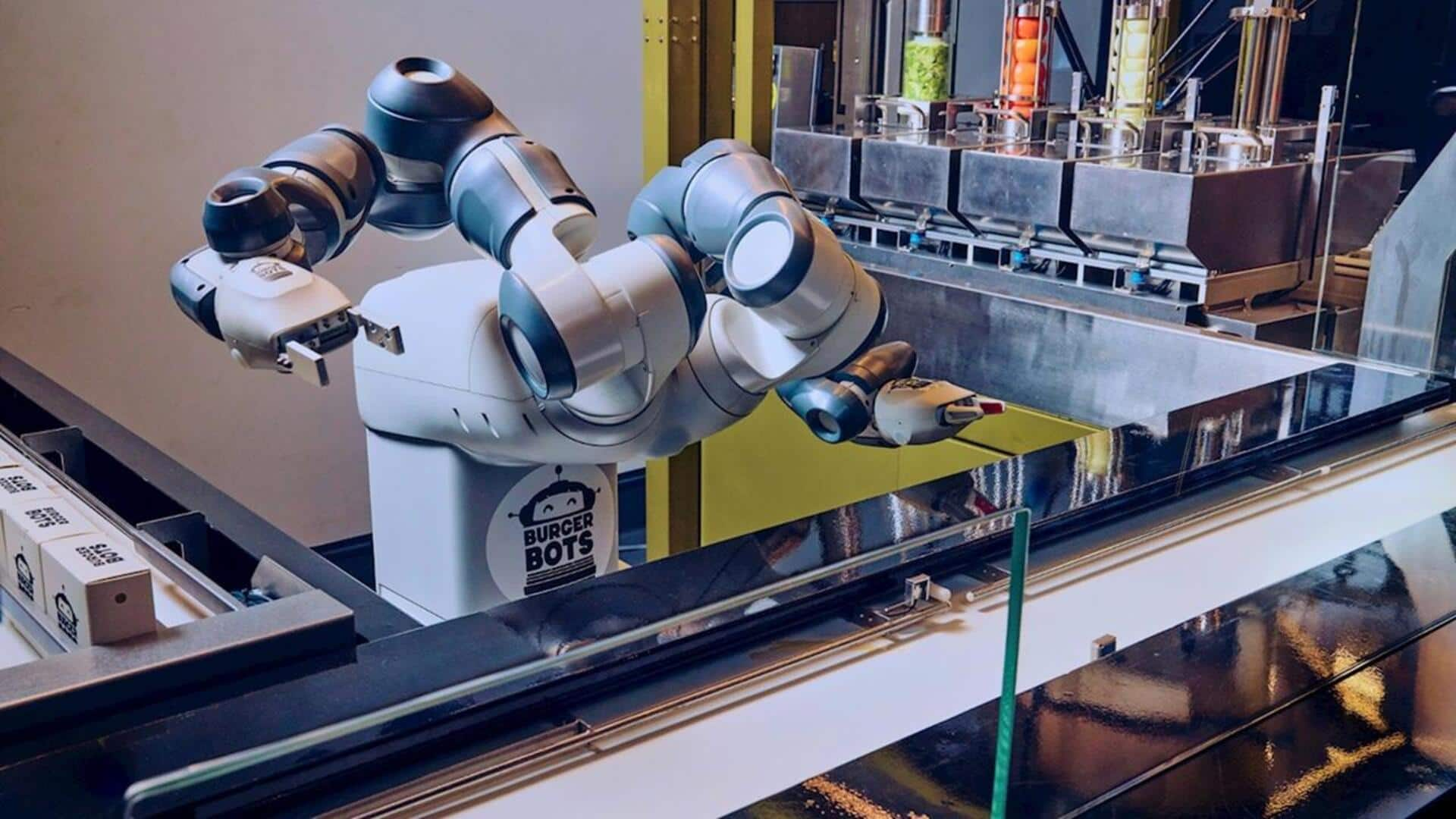
This robot-run restaurant serves your burger in just 27 seconds!
What's the story
In a groundbreaking development, a new fast food restaurant named Burgerbots has opened in Silicon Valley, California. The establishment is revolutionizing the industry with its unique concept of using robots as line cooks. These automated chefs can prepare burgers in just 27 seconds without needing breaks or sleep. Elizabeth Truong, the visionary behind this innovative idea, expressed her goal to "bring consistency, transparency and efficiency to food service."
Operation
How do the robots work?
The restaurant's operations are made possible through a collaboration with ABB Robotics. Two robots - Flexpicker and YuMi - work together in a dedicated burger-making unit. The process starts when Flexpicker puts a freshly cooked meat patty on a bun in a box. This box is then transported on a conveyor belt with QR codes embedded in it to get data for choosing toppings like special sauce, lettuce, cheese, pickles and onion.
Final touch
The 2nd robot completes the assembly
After Flexpicker's job, the burger assembly is passed on to YuMi. This robot adds the finishing touches to the burger, preparing it in just 27 seconds. Despite fears of automation taking over human jobs, Burgerbots has assured that their robots only do part of the work. Once a burger is prepared, it is handed over to a human server for delivering to customers.
Complementary roles
Robots are designed to enhance human workers' roles
The robots at Burgerbots are meant to complement human workers, not replace them. This has been welcomed by most industry insiders. A survey by ABB Robotics found that 89% of managers and 73% of workers in the hospitality industry are open to integrating robotics into their operations. "Robots allow staff to focus on what matters most - creating memorable dining experiences," said Marc Segura, President of ABB Robotics.
Future prospects
Truong envisions a future with robotic automation
Truong believes that in the next five years, most restaurants will have some form of robotic automation. This could be anything from back-of-house preparation and assembly to front-of-house service. She predicts that this trend will move from being a novelty to a necessity in the food industry. Segura also emphasized the potential for automation beyond factories, in the dynamic and demanding food service sector.